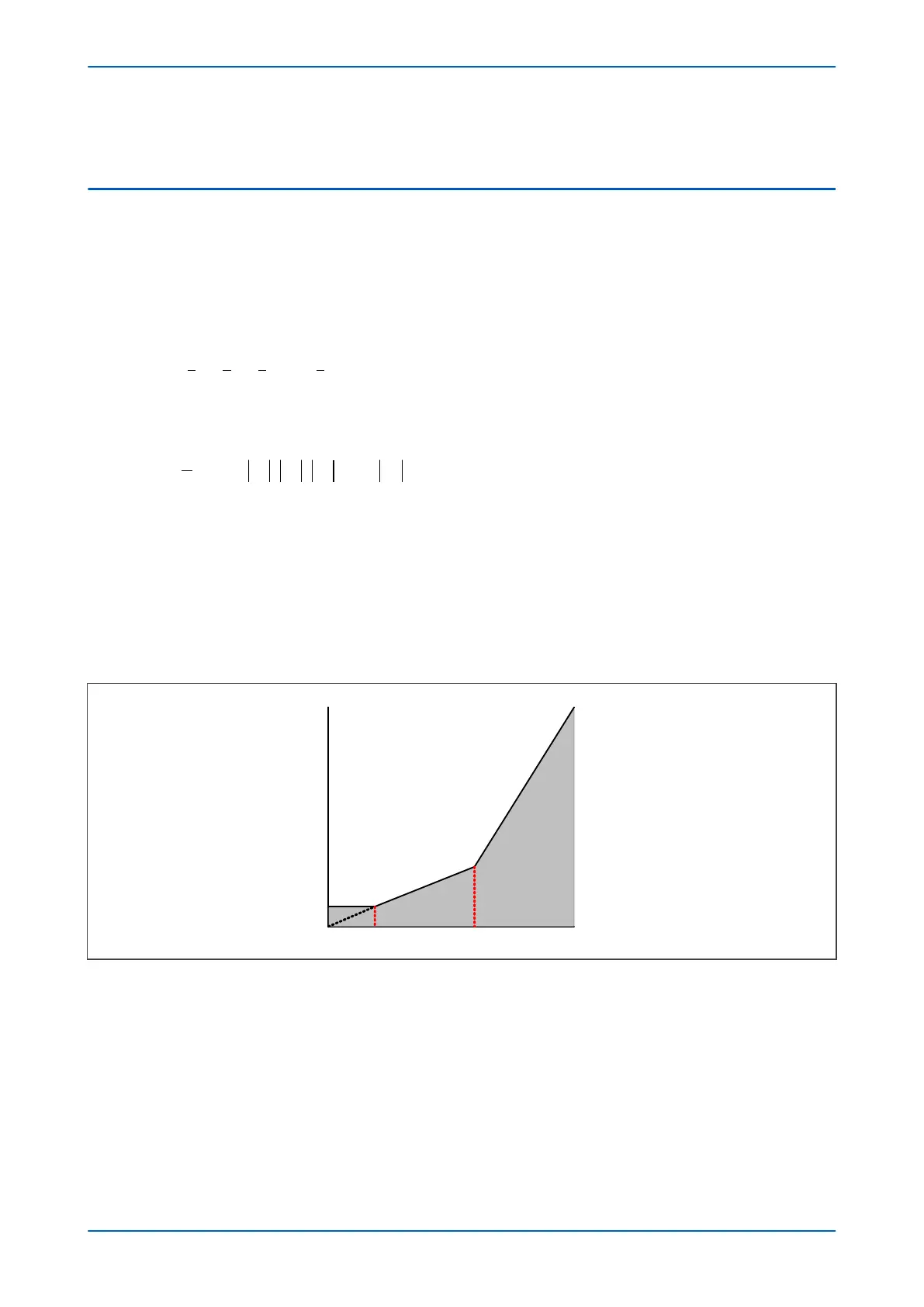If a CT is assigned to more than one winding, then an alarm is issued (CT Selection Alm). When this DDB signal is
asser
ted, the protection is also blocked.
3.3 LOW IMPEDANCE REF
3.3.1 SETTING THE BIAS CHARACTERISTIC
Low impedance REF uses a bias charactersitic for increasing sensitivity and stabilising for through faults. The
curr
ent required to trip the differential IED is called the Operate current. This Operate current is a function of the
differential current and the bias current according to the bias characteristic.
The differential current is defined as follows:
I I I I KI
diff
A B C N
= + +
( )
+
The bias current is as follows:
I I I I K I
bias A B C N
=
+
{ }
1
2
max , ,
where:
● K = Neutral CT ratio / Line CT ratio
● IN = curr
ent measured by the neutral CT
The allowable range for K is:
0.05 < K < 15 for standard CTs
The operate current is calculated according to the following characteristic:
K1
Operate region
Is1
Ibias
Idiff
V00678
Restraint region
K2
Is1/K1 Is2
Figure 78: REF bias characteristic
The following settings ar
e provided to define this bias characteristic:
● IREF> Is1: sets the minimum trip threshold
● IREF> Is2: sets the bias current kneepoint whereby the required trip current starts increasing
● IREF> k1: defines the first slope (often set to 0%)
● IREF> k2: defines the second slope
Chapter 8 - Restricted Earth Fault Protection P64x
174 P64x-TM-EN-1.3

